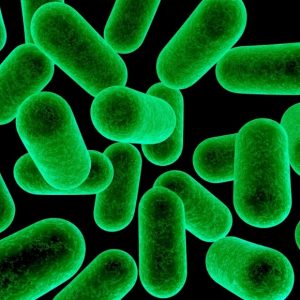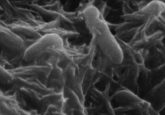Keeping up with microbiome research standards

Dev Mittar, lead scientist and head of microbiology research and development at ATCC, discusses the explosion of the microbiome field, the challenges facing microbiome research and the need for standards in assay development and optimization.10952
What is your scientific background, what do you do now and how did you get there?
I earned my doctorate in microbiology from the Punjab Agricultural University (Ludhiana, India), and completed a postdoctoral fellowship at the Weill Medical College of Cornell University (NY, USA) where I focused on cellular microbiology and high-content screening. I transitioned from academia to industry about 12 years ago, spending the first seven of those years working on product and assay development in different divisions of Becton Dickinson (NJ, USA). I joined ATCC (VA, USA) in 2013 as the head of their microbiology research and development group; there, I focused on designing new products and product formats that meet the unique needs of scientific investigators employing a wide range of traditional and molecular applications.
In fact, I have been tracking the surge of scientific progress propelled by a combination of data captured through the NIH Human Microbiome Project and rapid advancements in technology that allow for rapid sequencing of whole genomes in a matter of hours. Naturally, I jumped at the opportunity to develop standards that could address many of the inherent biases introduced throughout the metagenomics workflow; such as DNA extraction, library preparation, sequencing and bioinformatics analyses in order to provide a definable measure of standardization within microbiome research and its variety of related applications.
10951
What are the challenges facing microbiome research and why is standardization needed?
I have been following research in the microbiome field for several years now. The affordability of next-generation sequencing technology has significantly enhanced microbiome and metagenomics analyses. However, at the same time, both of the most common sequencing methods used in microbiome research—16S rRNA and shotgun metagenomics sequencing—demonstrate significant challenges. The introduction of scientific biases can occur at any stage along the metagenomic workflow for either methodology, from sample collection to data analysis, which can strongly influence the resulting data and its interpretation.
Although there are many DNA extraction kits available, we still get variable results for DNA quantity and quality for Gram-negative versus Gram-positive bacteria due to the inherent differences between their cell wall compositions. Therefore, even the very first step in your workflow – the process of extracting the DNA from your sampled microbial community – can itself lead to biases and variations in your microbiome data readout. When you begin to add all of the other steps to the process, such as different library preparation methods, formats and coverage of sequencing, as well as bioinformatics platforms for analysis, you begin to understand how data might be skewed in several directions. Furthermore, the inherent differences and complexities within each of these steps can compound the number of biases introduced throughout your workflow, which can then lead to inaccurate analyses and incorrect conclusions. This is why standardization at every step of your workflow is so important.
There’s so much microbiome research being published now. What would you say is the best way to promote use of standards in microbiome research?
I strongly feel that for peer-reviewed publications, researchers should incorporate standards into their workflows to improve the quality of their data and strengthen their conclusions. For translational research; regulatory institutions should enforce the use of standards that help to establish the validity, accuracy and reproducibility of data that are being used to support new discoveries and technologies.
There are a growing number of publications supporting this position that highlight the many problems associated with bias and emphasize the need for standardization in both 16S rRNA and shotgun metagenomics methods. In addition, there are several forums and groups such as the International Metagenomics and Microbiome Standards Alliance, the Microbiology Quality Control Project, and the Association of Biomolecular Resources Facilities–Metagenomics Research Group that are pushing for standardization in microbiome research.
Together, as a community, we should be holding each other scientifically accountable for the results that will ultimately affect human health around the globe. We can only do this if we have physical laboratory standards by which all experimental data can be reliably measured and compared against.
What are your opinions on the current and future state of microbiome research?
The human microbiome field is definitely one of the most complex and researched fields, especially now that it’s moving from academic to translational research. A lot of therapeutic and diagnostic industries are actively working on understanding the role the human microbiome plays in human health and disease and how this can translate into personalized healthcare.
Researchers are now using synthetic biology approaches to design probiotics based on your personal lifestyle, need or disease condition (e.g. probiotics for losing weight or managing depression). As scientists and bioinformaticians work toward developing a better understanding of how different lifestyles, environmental changes and disease states affect the microbiome, we will one day be offered a powerful opportunity to change the way patients are managed at an individualized level.
Why isn’t there a one-size-fits-all microbiome standard for every type of analysis that researchers are currently running?
Given the diversity of microorganisms, it is not possible to make a single standard that can represent any and every bacterial species present in the human microbiome. The composition of a standard would then need to vary depending on how it was going to be used; for example, whether it was going to be used for assay development and optimization, or as a parallel daily run control.
Standards need to be carefully chosen to fit the needs of the assay, but still yield consistency in their composition to provide reproducible results when used repeatedly. The current ATCC portfolio of microbiome standards contains both whole cell and genomic DNA mock microbial communities that have been mixed in different proportions to meet the diverse needs of microbiome researchers. We are also actively developing site-specific standards designed for research applications focused on the human skin, gut, oral and vaginal microbiomes. These particular standards would be ideal daily run controls alongside microbiome specimens.
Is there anything else you would like to add?
Although there is already a wealth of information on the human microbiome, there is still a lot that we don’t know. Previous metagenomics analyses have provided a lot of insight into the abundance and taxonomic profiles of microbial communities, but there is still much we don’t understand about how this metagenomic data translates into functional data.
Determining organism-level functions within a mixed microbial community will require a ‘next level’ of research to be added to the data pool, including both metatranscriptomics and metabolomics research. Moreover, while a majority of effort has been invested in evaluating bacterial communities within the human body, we have to consider that the human body contains much more than just bacteria; there are also viral and fungal communities that impact the human microbiome as well. These communities are an integral part of the human body and require additional research performed with standardized methods.
Regardless of what type of microbiome research is performed, one thing is abundantly clear—standardization is essential. It is only with authenticated standards and optimized workflows that we will be able to achieve a clear understanding of how the human microbiome changes and develops over time, ultimately relating back to a deeper knowledge of human physiology.





